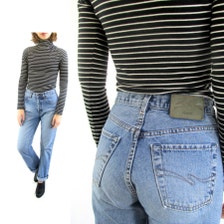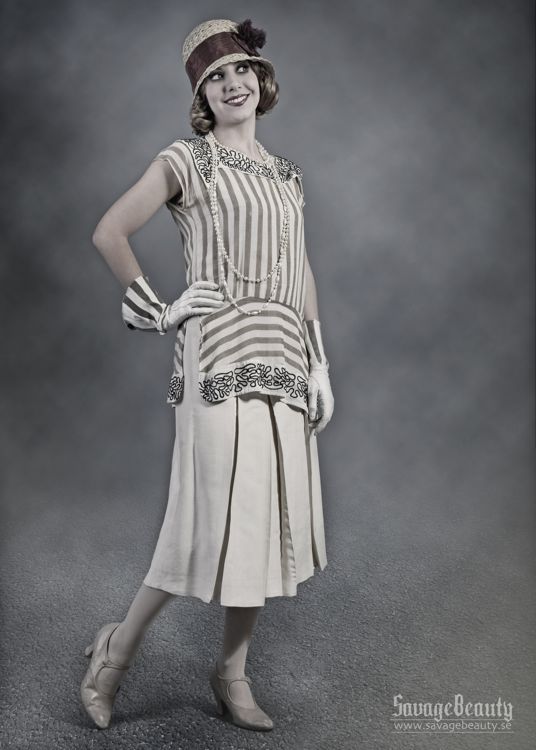1880 - 1900:
In the 1880's the corset had become a very elegant and desirable object in every woman's wardrobe and much attention paid to its design and execution. The rapid growth of the corset manufacturing industries meant that there was a huge variety in materials, colours, size and fit. The most expensive might be made of satin, brightly coloured corsets also became more acceptable and fashionable.
1880 was a time of extremely tight and restrictive corsetry that was worn under dresses with long boned bodices, tight sleeves and high necks. On the surface looked like a very modest look, this line was so torso defining that a woman’s shape could hardly go unnoticed.the Dresses could weigh between 15 to 20 pounds. Skirts were always layered and draped, often with an apron front and a trained back. Pleating was a must everywhere, both in skirt construction and in trimming.


AGE OF OPULENCE:
The 19th century was a period of huge growth in Britain, which had a profound effect on art and design. The Industrial Revolution saw Britain become a major manufacturing power.The Victorian period saw the British Empire reach its peak, and designers increasingly looked to the East for inspiration.

1900 - 1910:
The fashion of the 19th century is renowned for corsets, bonnets,
top hats, bustles and petticoats. Women’s fashion during this Victorian
period was pretty much dominated by full skirts, which gradually moved to
the back of the silhouette.Towards the end of the period, the
less restrictive Aesthetic style began to emerge.
The dresses were decorated using large and small tucks, hem
ruffles, buttons and lace. For the daytime, ladies wore very high necks and the bosom was undefined with fullness over the boned bodice that often would drop to the waist. These pigeon breast where often featured wide cape type collars that dropped off the shoulders.The Sleeves were fitted from shoulder to elbow from where the fullness of it would extend to the wrist. It was not unusual to see a double-sleeved effect.





During the evening women would wear the so-called tea gown, this gave them the freedom of wear a gown without the corset during the tea time.







(FLAPPER DRESSES)
 1910 - 1920 :
1910 - 1920 : Beautifully coordinated and accessorized outfits were the most important feature of 1920's ladies fashions.
Hats,shoes,stockings,handbags,dresses and jewelry all came together in perfect harmony to create a unique and elegant style that can only be appreciated when seen in real-life or in colour illustrations.The vibrant colours are lost in black and white on the photographs that we can now find on internet or books about that time.
In 1920's the Dresses were lighter (due to less material and new synthetic fabrics) and brighter and shorter than ever before. Fashion designers played with fabric colours, textures and patterns to create completely new styles of dressing. The Evening dresses, coats and jackets were often trimmed with fur. Hemlines were rising for most of the decade but then dropped slightly towards the end in 1930's.

The Great Depression brought along the patchwork and the dusty colors.





The women wore dresses and kept their hair close to their head. Fur was in and so were floral patterns. Makeup was chic and shoulder pads were very important until the late 1930's.
In the 30's people used to mark their belonging with their initials engraved or stitched. This was a very common free service that stores used to offer.
Even though people were broke in the 1930's they still dress like a million dollars!
Silhouettes:
It was a return to lady-like glamour in the Thirties. Dresses were designed to show off the curves of every women. The clothes accent the waist, but nothing like the corset which women wore in previous decades. Evening wear was much more glamorous, taking inspiration from the Hollywood film stars. Lower backs were exposed showing skin in a very sexy but elegant way. Simple blouses and wrap skirts were everywhere with V-necks cardigans or jackets.


Accessories:
Hats were still a key accessory during the thirties. Small plate shaped hats were worn, showing off the forehead. Women started to wear scarves around their heads, holding their hair in place. The invention of Nylon in 1938 led to the introduction of knitted hosiery. there was no longer a problem of saggy stockings. A sheer allure and tights stocking enhanced the appearance of women’s legs.




The End Of The War,Rationing and...
1950 :

In World War II and the 1940's, the clothes were influenced by rationing and limited quantities of fabrics, threads and needles, so the most popular look was a simple outfit using as little of these resources in demand as possible. Once World War II and rationing came to an end, a new availability of different types of fabrics and larger quantities of these fabrics allowed a new type of fashion to bloom during the fifties, especially in the United States.
In the U.S. John F. Kennedy started his period as President, bringing with him a beautiful young fashionista, she was The First Lady. Jackie Kennedy’s innate sense of style soon made her ‘Queen’ of American fashion. The American designed short-jacketed sheath suits (at which U.S. based designer Oleg Cassini excelled) captured her eye for French couture style.
Women's dresses were in particular flooded with excess fabric, showing off gatherings,loads of pleats, puffy petticoats, and fabulous collars, all made of the best fabrics available at the time; taffeta, nylon, rayon, wool and leather in the brightest and boldest patterns and colors. The 1950's marked the beginning of one of the biggest economic booms in US history and promoted the rise of consumption. a stamp of the American excess that has defined a lot of our culture in the US and worldwide for the past sixty years.


 ###
###Style Clothing became an important part of culture in the 1950's, with the country going through many social and cultural changes. It would showcase one's place in society more so than ever before and became a way to express conformity and individual identity.




Fifties fashion helped to define the woman's place in society, especially for wives.there were five different types of outfits that began to develop for women during this decade, each with a exact purpose. Women's clothing could for the first time be easily sorted into clothing for doing the housework or just lounging around their homes, going out for a while or for business meetings, maternity wear,clothing for social encounters, or for women with lower economic status rather than the emerging middle class, work uniforms. These different styles were key to impress and please other people including their husbands, neighbors, friends and employers, not focusing on every women and their personal styles in contrast clothing did not expressed the individual identity of the women who wore them.


The Beginning Of The Baby Boom...
1960 - 1970:
Italian designers like Pucci created crazy psychedelics palettes of color, transforming users of simple silk knit gowns into walking works of art. American designers excelled in casual, simple sportswear chic. French couture (under the influence of Yves Saint Laurent) explored other ideas; one of these borrowed pants and tuxedo jackets from the menswear for the hip, liberated fashion-conscious woman. Some British designers even try to borrow the new mini skirt from women’s fashion to use it in menswear, This wasn't a success.
The 1960's brought with them a transition. The decade started with a continuation of the 1950's silhouette but ten years later the look was the exactly the opposite.



The early 1960's were recognized as a mixture between box dresses and 1950's fashions. In the middle of 1960's, fashion began to take signals from London and the waistline appeared again. But in the late 60's things were more specific.
the look was much more sleek and modern. The lines were a lot more sharper and more form-fitting. Fur start being less popular, but gloves were still a must have in every women's wardrobe.


The 60's were the era in which the flared-bottomed pants,were more fashionable than the much more obvious bell-bottoms of the seventies. Polyester was a very common material and skirts were very short. Women were no longer embarrassed to flaunt their stuff in public.
even though wild colors were not news, in the late 1960's the patterns were so much brighter.And then something crazy happened, The waistline on the dresses disappeared again . Women were showing their tunics and culottes, with the wind flowing right through their comfortable,baggy gowns.
1980:
Shoulder pads appeared in fashion on a super-sized version, and the “power suit” showed women’s emerging status in the workplace. The term “Yuppie” was used all the time referring to the Young Urban Professionals who were career driven, young adults, obsessed with upward mobility, money and the pursuit of personal achievements. Casual wear for the Yuppie set was a preppy style with khaki pants, traditional blue blazers, crisp white shirts, Polo shirts by Izod, Lacoste and Ralph Lauren and cotton cardigans draped over one of the shoulders with a loose knot in front. Designers embraced their logos putting them on the exterior of their garments and their clothing became elite status symbols.










Glamour in the 1980's,translated to a amazing evening wear studded with sequins and beads. Hair was usually permed,teased and styled to even larger proportions.The Makeup was bold and colorful,same as the jewelry of the era which featured large statement necklaces and long, dangling earrings which almost all of them touched the shoulders.



The 80's were somehow restrain in color, it was a time where we could see a lot browns, tans and oranges. Block-like shapes were everywhere and dressing like a tennis player was the cool thing to do.velvet was hot and knitted fabrics where even better. clothes for both men and women had high waistline.
1990:
The 1990's were called the 'anti-fashion' decade. People could choose from a very wide range of clothing trends, most of which were an act against the materialism and the excess of the 1980's.Specially, young people who got their inspiration from a variety of sources, instead of following one particular 'style' or 'look.'



Boys and girls used to wear baseball caps in many different ways. Mullets were super fashionable for a couple of years and it was very stylish to wear a turtleneck underneath any sweater.
Also in the 1990's different styles worn by hop hop artists were becoming increasingly mass media. And because of the growing popularity of hip hop music in the suburban community, urban styles were everywhere and it was not just in the big cities. By the late 1990's hip hop style was without a doubt the most popular between young people.





fashion trends in the 90's:
1. crimped hair
2. bandannas
3. overalls
4. Slap bracelets
5. Tattoo Chokers. The number of necklaces you had was proportional to how popular you were.
6. Butterfly clips.
7. Bucket hats.





Interestingly enough,the late 90's clothing styles are not too different from what they are today. In the 1990's, musicians had a much greater influence on what young people wore than designers. All a kid in any part of the world had to do was turn on MTV for the latest styles of the moment.





